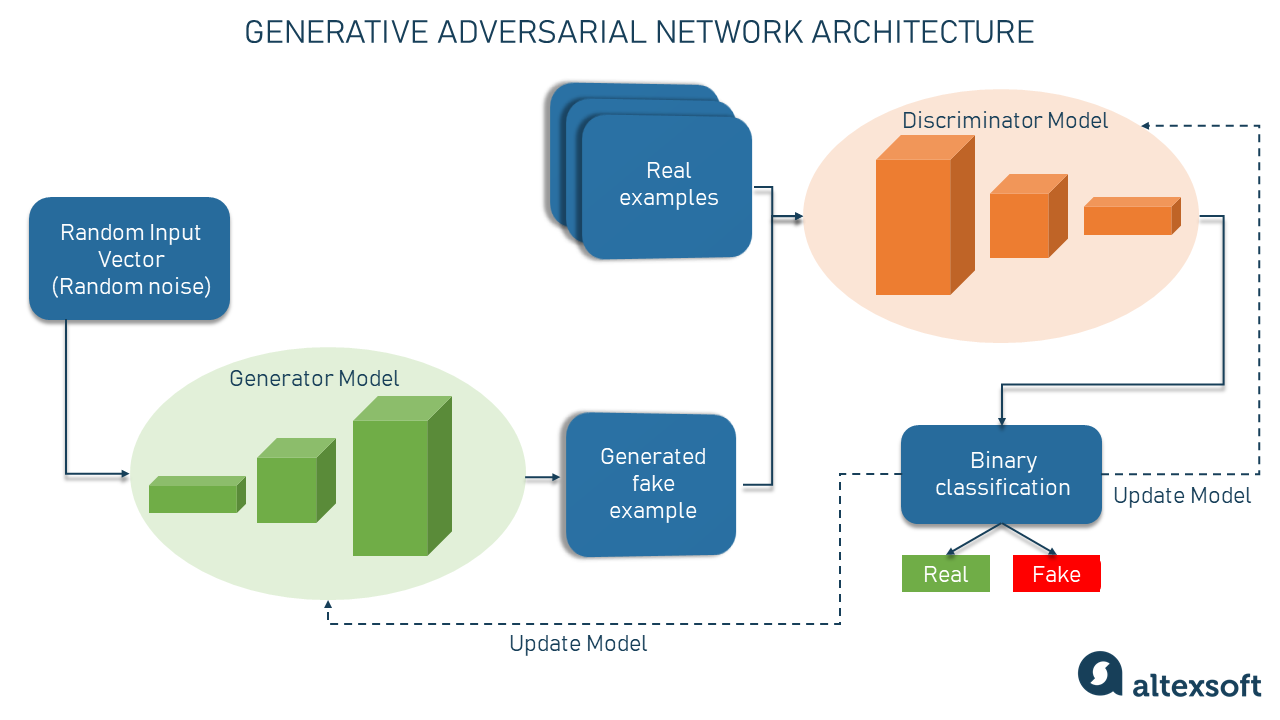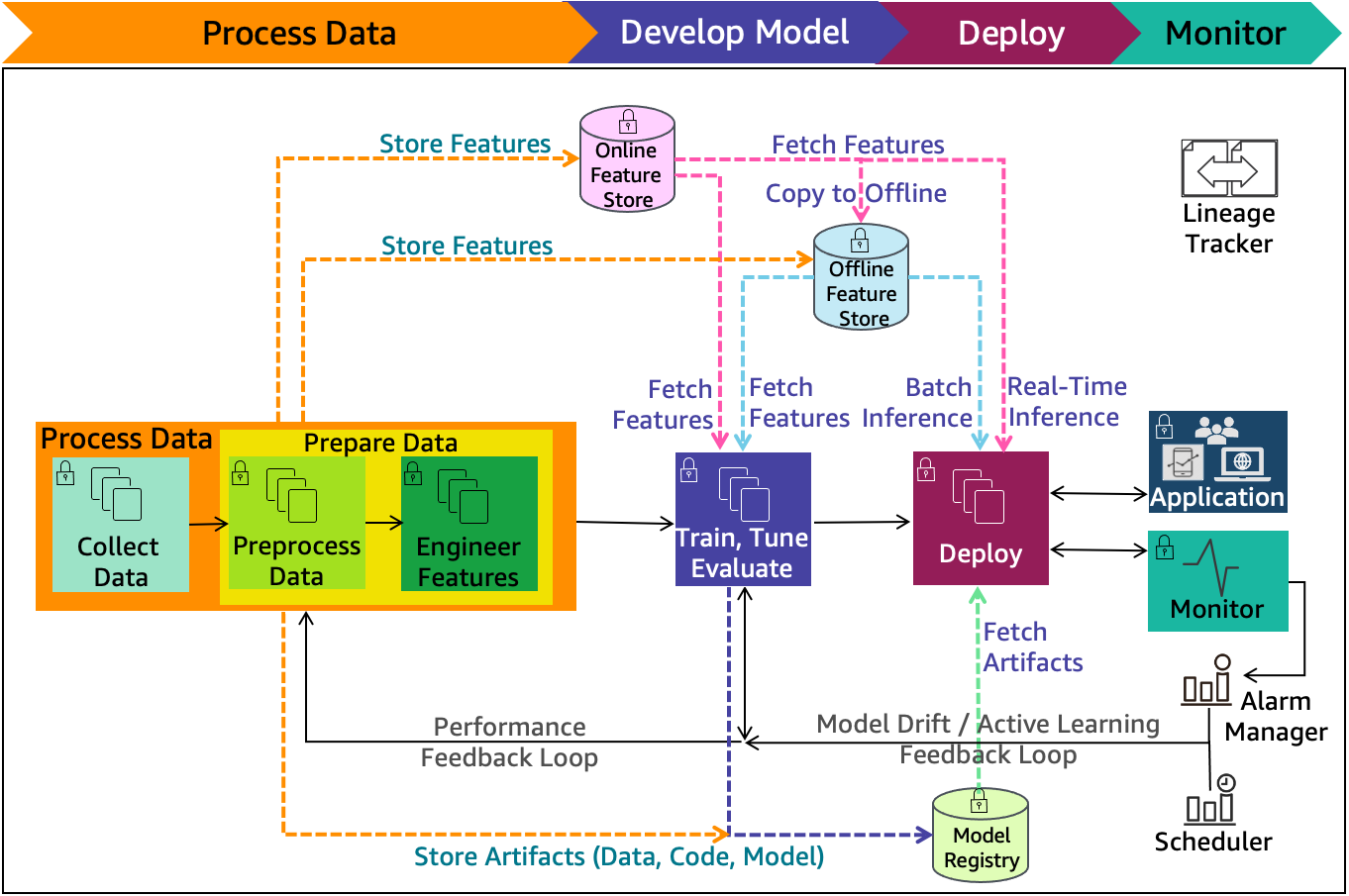Generative AI Vs Machine Learning Vs Deep Learning
Artificial Intelligence (AI) refers to the ability of machines to perform tasks that typically require human intelligence, such as understanding natural language, recognizing images, and making decisions. It is a broad field that includes many different techniques and applications, including machine learning, natural language processing, robotics, and computer vision.
AI systems are designed to learn from data and improve their performance over time, making them more effective and efficient at solving complex problems. They can be used in a wide range of applications, from healthcare and finance to transportation and manufacturing.
Some of the key benefits of AI include:
- Improved accuracy and efficiency
- Increased productivity and automation
- Enhanced decision-making and problem-solving capabilities
- Reduced costs and resource requirements
However, there are also concerns about the ethical implications of AI, particularly in areas such as privacy, security, and bias.
Dive deep into the realm of generative AI as we unravel its mysteries and explore its vast potential. Embark on a captivating journey into the future with our white paper,
“Discovering Generative AI – A Captivating White Paper“
What is Generative AI?

Source – altexsoft.com
Generative AI refers to a subset of AI that focuses on creating new and original content rather than simply recognizing or analyzing existing data. Unlike traditional machine learning algorithms that are programmed to make predictions based on a given set of data, generative AI algorithms are designed to create new data. This could be in the form of images, text, music, or even entire video clips. This includes techniques such as generative adversarial networks (GANs) and variational autoencoders (VAEs).
GANs consist of two neural networks: a generator and a discriminator. The generator learns to create new samples that are similar to the training data, while the discriminator learns to distinguish between real and fake samples. Over time, the generator learns to create increasingly realistic samples, making it an effective tool for tasks such as image and video synthesis.
VAEs are another type of generative AI technique that learns to model the distribution of the training data and generate new samples from that distribution. This makes them particularly effective for applications such as natural language generation and music composition.
Generative AI can be thought of as a type of creative machine learning that can create content that is both original and useful. Some examples of generative AI in action include:
- The creation of new and unique images that have never been seen before
- The generation of music that is entirely original and unlike anything else
- The creation of new and unique text that can be used for a variety of purposes
How does Generative AI work?
Generative AI works by using a combination of neural networks and machine learning algorithms to create new data. These algorithms are trained on large datasets of existing content, which allows them to learn the patterns and characteristics of that data. Once the algorithm has been trained, it can then be used to create new and unique content that is based on the patterns it has learned.
The process of creating new data using generative AI typically involves three main steps:
- Training the algorithm: This involves feeding the algorithm with a large dataset of existing content. The algorithm then uses this data to learn the patterns and characteristics of that data.
- Generating new content: Once the algorithm has been trained, it can be used to generate new and unique content that is based on the patterns it has learned.
- Evaluating the output: The final step is to evaluate the output and determine whether it is useful or not. This typically involves a human expert reviewing the output and providing feedback to the algorithm.

Applications of Generative AI
Generative AI has a wide range of applications across various industries. Some examples of these applications include:
- Art: Generative AI can be used to create new and unique pieces of art that are unlike anything else.
- Music: Generative AI can be used to create new and original pieces of music that are tailored to a specific genre or style.
- Gaming: Generative AI can be used to create new and unique game content that is generated on the fly, providing a more immersive gaming experience.
- Content Creation: Generative AI can be used to create new and unique content for a variety of purposes, such as marketing, advertising, and social media.
Generative AI is an exciting and rapidly developing field of AI that has the potential to revolutionize the way we create and consume content. By leveraging the power of machine learning and neural networks, we can create new and unique content that was previously impossible. As the field of generative AI continues to evolve, we can expect to see even more exciting and innovative applications in the future.
Citations:
- “GAN for Efficient & High Fidelity Speech Synthesis” https://proceedings.neurips.cc/paper/2020/hash/c5d736809766d46260d816d8dbc9eb44-Abstract.html
- “Generative Models.” OpenAI, https://openai.com/generative-models/
- Goodfellow, Ian, et al. “Generative Adversarial Networks.” arXiv preprint arXiv:1406.2661 (2014).
What is Machine Learning?

Machine Learning (ML) is a subset of AI that focuses on the development of algorithms and statistical models that can learn from data and make predictions or decisions. ML algorithms can be classified into three main categories: supervised learning, unsupervised learning, and reinforcement learning.
Supervised learning involves training a model on labeled data, where the input and output variables are known. The model then uses this data to make predictions on new, unseen data.
Unsupervised learning involves training a model on unlabeled data, where the input variables are known but the output variables are not. The model then learns to identify patterns and relationships in the data, such as clustering or dimensionality reduction.
Reinforcement learning involves training a model to make decisions based on feedback from the environment. The model learns to take actions that maximize a reward signal, such as winning a game or achieving a goal.
Some of the key applications of ML include:
- Natural language processing
- Image and video recognition
- Fraud detection and cybersecurity
- Recommendation systems and personalized marketing
Types of Machine Learning
1. Supervised Learning
Supervised learning is a type of machine learning where the model is trained on labeled data. The algorithm is provided with a set of input/output pairs, and the goal is to learn a function that maps inputs to outputs accurately. The algorithm is trained on a subset of the data and then tested on the remaining data to evaluate its performance.
2. Unsupervised Learning
Unsupervised learning is a type of machine learning where the model is trained on unlabeled data. The algorithm is provided with a dataset and tasked with discovering patterns and relationships between the data points. Unlike supervised learning, there is no specific output to predict, and the algorithm must find structure on its own.
3. Reinforcement Learning
Reinforcement learning is a type of machine learning where the algorithm learns by trial and error. The algorithm is rewarded or punished based on its actions in an environment, and it learns to make decisions that maximize the reward over time. Reinforcement learning is used in many applications, including robotics, gaming, and self-driving cars.
Machine Learning FAQs
Q: What is the difference between AI and machine learning?
A: AI is a broader field that includes machine learning, natural language processing, computer vision, and other technologies. Machine learning is a subset of AI that involves teaching computers to learn patterns from data without being explicitly programmed.
Q: What are some applications of machine learning?
A: Machine learning is used in many applications, including recommendation systems, fraud detection, image recognition, and natural language processing. It is also used in autonomous vehicles, robotics, and predictive maintenance.
Q: How do you evaluate the performance of a machine learning model?
A: The performance of a machine learning model is evaluated using metrics such as accuracy, precision, recall, and F1 score. The model is trained on a subset of the data and then tested on the remaining data to evaluate its performance.
References
- Goodfellow, I., Bengio, Y., & Courville, A. (2016). Deep learning. MIT press.
- Mitchell, T. (1997). Machine learning. McGraw Hill.
- Sutton, R. S., & Barto, A. G. (2018). Reinforcement learning: An introduction. MIT press.
Overall, machine learning is a powerful technology that has the potential to revolutionize many industries. With the increasing availability of data and advances in algorithms, we can expect to see even more exciting applications of machine learning in the future.
At RedBlink Technologies, we offer cutting-edge machine learning services that can revolutionize the way your business operates. Our team of skilled data scientists and Machine learning engineers are experts in developing powerful machine learning models that can analyze vast amounts of data to identify patterns, make predictions, and optimize business processes.
What is Deep Learning?

Deep Learning is a subset of Machine Learning that focuses on artificial neural networks and their ability to learn and make decisions. It involves the use of complex algorithms to train neural networks to recognize patterns and make predictions based on large amounts of data.
The key difference between DL and traditional ML algorithms is that DL algorithms can learn multiple layers of representations, allowing them to model highly nonlinear relationships in the data. This makes them particularly effective for applications such as image and speech recognition, natural language processing, and autonomous driving.
Some of the key benefits of DL include:
- Improved accuracy and performance
- Reduced feature engineering requirements
- Increased scalability and flexibility
- Enhanced ability to handle complex, unstructured data
Applications of Deep Learning
Deep learning has a wide range of applications in various fields such as computer vision, natural language processing, speech recognition, and robotics. Here are some examples of how deep learning is used in Computer Vision –
Computer Vision – Computer vision is an area of artificial intelligence that allows machines to interpret and understand visual data from the world around them. Deep learning has revolutionized computer vision, enabling machines to recognize objects, faces, and scenes with incredible accuracy. Here are some applications of deep learning in computer vision:
- Object detection: Deep learning algorithms can detect and identify objects within an image or video, such as cars, pedestrians, and traffic lights.
- Facial recognition: Deep learning algorithms can recognize faces within an image or video, allowing for applications such as security systems and social media filters.
- Image classification: Deep learning algorithms can classify images into various categories, such as identifying whether an image contains a cat or a dog.
- Autonomous driving: Deep learning is a key component in the development of autonomous driving systems, enabling vehicles to interpret and respond to visual data from their surroundings.
As AI continues to grow in popularity and practicality, we are seeing more and more examples of its capabilities. Generative AI is one of the most fascinating aspects of AI, as it allows us to create new and unique content that we could never have thought of on our own. In this article, we will explore what generative AI is and how it works.
How do these technologies work together?
AI as the broader category
AI is a field of computer science that deals with developing intelligent machines that can think and learn like humans. AI systems use algorithms to perform tasks that typically require human intelligence, such as perception, reasoning, and learning. They can be trained to recognize patterns in data and make decisions based on that data. AI can be divided into two categories: narrow or weak AI and general or strong AI.
Narrow or weak AI systems are designed to perform specific tasks such as voice assistants like Siri, Alexa, and Google Assistant, and chatbots that provide customer service. On the other hand, General or strong AI systems are designed to perform any intellectual task that a human can, and can adapt to different situations like humans. Such AI systems are still in development and are not yet widely available.
Machine Learning as a subset of AI
Machine Learning is a subset of AI that focuses on building systems that can learn from data without being explicitly programmed. Instead, the system is trained on a large dataset and learns from the patterns it recognizes. Machine Learning can be divided into three categories: supervised learning, unsupervised learning, and reinforcement learning.
Supervised learning algorithms learn to make predictions based on labeled data, while unsupervised learning algorithms learn from unlabeled data to identify patterns or groupings. Reinforcement learning algorithms learn to make decisions based on rewards and punishments. Machine learning is used in many applications, such as spam filters, recommendation systems, and image recognition.
Deep Learning as a subset of Machine Learning
Deep Learning is a subset of Machine Learning that focuses on building artificial neural networks that can learn from data. Neural networks are designed to mimic the structure of the human brain, and deep learning networks can have many layers of neurons that can recognize and analyze complex patterns in data.
Deep Learning has been instrumental in many AI applications such as image recognition, speech recognition, and natural language processing. For example, deep learning has revolutionized the field of computer vision, enabling machines to recognize objects in images and videos with high accuracy.
Generative AI as a subset of Deep Learning
Generative AI is a subset of Deep Learning that focuses on building systems that can generate new data, such as images, videos, and audio. Generative AI uses techniques such as Generative Adversarial Networks (GANs) and Variational Autoencoders (VAEs) to create new data by learning from existing data.
Generative AI has many applications, such as creating realistic images, generating text, and even creating new music. It has the potential to revolutionize many industries, such as art and entertainment, and could lead to the creation of entirely new forms of media.
In conclusion, AI is a vast and complex field that is constantly evolving. Machine Learning, Deep Learning, and Generative AI are just a few of the subcategories that fall under the umbrella of AI. Each subset has its own unique applications and techniques and works together to create intelligent systems that can learn and adapt like humans.
References
- What is AI? – IBM, https://www.ibm.com/cloud/learn/what-is-artificial-intelligence
- Machine Learning – Stanford University, https://stanford.edu/~shervine/teaching/cs-229/cheatsheet-supervised-learning
- Deep Learning – MIT Technology Review, https://www.technologyreview.com/2018/11/17/103781/deep-learning-expl
Advantages and Limitations of AI
Artificial intelligence (AI) is a broad term that refers to the development of machines that can perform tasks that typically require human intelligence. One of the primary advantages of AI is its ability to process large amounts of data and extract insights quickly, enabling businesses and organizations to make better decisions. Additionally, AI can automate repetitive tasks and increase efficiency, freeing up human workers to focus on more complex and creative tasks.
However, AI also has some limitations. One concern is that as machines become more intelligent, they may become more difficult to control, potentially leading to unintended consequences. Additionally, there are ethical considerations around the use of AI, such as the potential for bias in decision-making algorithms.
Advantages and Limitations of Machine Learning
Machine learning is a subset of AI that involves the use of algorithms to analyze data and learn from it without being explicitly programmed. One of the key advantages of machine learning is its ability to improve over time as it processes more data. This can lead to more accurate predictions and insights.
However, machine learning also has limitations. One concern is that the accuracy of predictions can be affected by biases in the data used to train the algorithms. Additionally, machine learning algorithms can be complex and difficult to interpret, making it challenging to understand how they are making decisions.
Advantages and Limitations of Deep Learning
Deep learning is a subset of machine learning that involves the use of neural networks, which are designed to mimic the way the human brain works. One of the key advantages of deep learning is its ability to process unstructured data, such as images or natural language, with a high degree of accuracy.
However, deep learning also has limitations. One challenge is that deep learning algorithms require large amounts of data to train, which can be time-consuming and costly. Additionally, the complexity of neural networks can make them difficult to interpret, which can be a concern in applications where explainability is important.
Advantages and Limitations of Generative AI
Generative AI is a type of AI that involves the use of algorithms to generate new content, such as images, music, or text. One of the primary advantages of generative AI is its ability to create new content that is similar to human-generated content, which can be useful in applications such as art or music.
However, generative AI also has limitations. One concern is that the content generated by these algorithms may be of lower quality than human-generated content. Additionally, there are ethical concerns around the use of generative AI in applications such as deepfakes, which can be used to create misleading or false content.
In conclusion, each technology in the field of artificial intelligence has its own set of advantages and limitations. While these technologies hold great promise for improving efficiency, accuracy, and creativity in a variety of industries, it is important to consider the potential risks and ethical implications associated with their use.
References
- “Artificial intelligence: Advantages and Disadvantages” by Karan Goel, Medium, 2019
- “The Pros and Cons of Machine Learning” by John Koetsier, Forbes, 2018
- “Advantages and Disadvantages of Deep Learning” by Abdul Wahab, Towards Data Science, 2020
- “The Pros and Cons of Generative AI” by Nir Bar-Lev, Forbes, 2021
Real-world Applications of Machine Learning, Deep Learning, and Generative AI
Artificial Intelligence (AI) has been around for several decades, but recent advancements in machine learning, deep learning, and generative AI have made it more accessible and usable than ever before. These technologies have numerous real-world applications across industries, including healthcare, finance, manufacturing, and marketing. In this article, we will explore some of the most significant applications of machine learning, deep learning, and generative AI, and how they are revolutionizing various sectors.
Real-world Applications of Machine Learning
Machine learning is a subfield of AI that involves training algorithms to learn from data and make predictions or decisions without being explicitly programmed. The applications of machine learning are wide-ranging and include image recognition, natural language processing, predictive maintenance, fraud detection, and personalized marketing.
One of the most significant applications of machine learning is in healthcare. Researchers are using machine learning algorithms to analyze patient data and develop personalized treatment plans. For example, a study published in the Journal of Medical Internet Research found that machine learning algorithms could accurately predict the risk of hospital readmission for heart failure patients based on their medical history and demographics.
In finance, machine learning algorithms are used for fraud detection, credit scoring, and algorithmic trading. According to a report by Deloitte, machine learning can help financial institutions detect fraudulent transactions with up to 90% accuracy. Similarly, credit scoring models that use machine learning algorithms are more accurate than traditional scoring models, which can improve lending decisions.
Real-world Applications of Deep Learning
Deep learning is a subset of machine learning that involves training deep neural networks to perform tasks such as image and speech recognition, natural language processing, and recommendation systems. Deep learning has revolutionized computer vision, enabling machines to identify and classify objects with human-like accuracy.
One of the most significant applications of deep learning is in autonomous vehicles. Companies such as Tesla, Waymo, and Uber are using deep learning algorithms to develop self-driving cars. These algorithms can analyze vast amounts of data from sensors and cameras to make real-time driving decisions, such as braking, accelerating, and changing lanes.
Another application of deep learning is in natural language processing (NLP). NLP involves teaching machines to understand and respond to human language. Deep learning algorithms have enabled significant advancements in NLP, such as language translation, sentiment analysis, and chatbots. For example, Google Translate uses deep learning to translate text from one language to another with high accuracy.
Real-world Applications of Generative AI
Generative AI is a branch of AI that involves creating machines that can generate new content, such as images, videos, and text, that are similar to human-made content. The most significant application of generative AI is in the creative industry, where it is used to generate music, art, and literature.
One of the most popular applications of generative AI is in the field of fashion design. Companies such as H&M, Zara, and Adidas are using generative AI to create new designs and styles. These algorithms analyze data on fashion trends, consumer preferences, and historical sales to generate new designs that are both trendy and marketable.
Another application of generative AI is in video game development. Game developers are using generative AI to create new game assets, such as characters, landscapes, and environments. This technology can generate high-quality game assets in a fraction of the time it would take for humans to create them manually.
References
- Huang, S., Yang, J., Chen, L., & Guo, Y. (2019). Prediction of hospital readmission risk using machine learning algorithms. Journal of medical systems, 43(10), 330.
- Deloitte. (2019). How Machine Learning Can Improve Credit Scoring. Retrieved from https://www2.deloitte.com/cn/en/pages/risk/articles/artificial-intelligence-for-credit-risk-management.html
- Lu, Y., & Peng, Y. (2021). Advances and applications of deep learning in natural language processing. Journal of Ambient Intelligence and Humanized Computing, 12(3), 2317-2331.
- Doshi-Velez, F., & Kim, B. (2017). Towards a rigorous science of interpretable machine learning. arXiv preprint arXiv:1702.08608.
- Koestinger, M., Hirzer, M., Wohlhart, P., Roth, P. M., & Bischof, H. (2012). Large scale metric learning from equivalence constraints. In Computer Vision–ECCV 2012 (pp. 228-241). Springer, Berlin, Heidelberg.
- Lample, G., Sablayrolles, A., & Gandrabur, S. (2019). Real-time natural language processing with deep learning in TensorFlow Lite on mobile devices. arXiv preprint arXiv:1910.14659.
- H&M. (2021). AI boosting sustainability: H&M uses artificial intelligence to improve fabric sourcing. Retrieved from https://www.thomasnet.com/insights/zara-h-m-fast-fashion-ai-supply-chain/
- Peckham, M. (2019). How AI is changing the gaming industry. TechRadar. Retrieved from https://www.techradar.com/news/game-on-how-ai-is-transforming-video-games-forever
Ethical Considerations
Artificial Intelligence (AI) is the development of computer systems to perform tasks that would typically require human intelligence, such as visual perception, speech recognition, decision-making, and language translation. Machine Learning (ML) is a subset of AI that focuses on creating algorithms that can learn from and make predictions on data. Deep Learning (DL) is a subset of ML that uses artificial neural networks to learn from large datasets. Finally, Generative AI is a type of AI that uses deep learning techniques to generate new content, such as images, music, and text.
While AI has great potential, it also poses ethical concerns that need to be addressed. Two crucial ethical considerations include bias in machine learning algorithms and the potential misuse of Generative AI.
Bias in Machine Learning Algorithms
Bias in machine learning algorithms occurs when the algorithms learn from biased data or contain biases in their design. This can result in inaccurate predictions or perpetuate discrimination and inequality. For instance, facial recognition software has been shown to have higher error rates for people of color, which can lead to wrongful accusations and arrests. Therefore, it is essential to identify and eliminate bias in machine learning algorithms to ensure fairness and equity in AI systems.
Potential Misuse of Generative AI
Generative AI has tremendous potential to create new content, but it can also be misused for harmful purposes. For instance, deepfake videos created using generative AI can be used to spread misinformation or damage someone’s reputation. Similarly, generative AI can be used to create fake news articles or phishing emails that can deceive people. Therefore, it is crucial to develop safeguards to prevent the misuse of generative AI and ensure that it is used ethically.
In conclusion, AI, machine learning, deep learning, and generative AI have the potential to revolutionize many industries. However, ethical considerations must be taken into account to ensure that these technologies are used for the betterment of society. By addressing bias in machine learning algorithms and potential misuse of generative AI, we can create a more equitable and just AI landscape.
Code Conductor: Harnessing AI’s Power for Effortless Coding

Popular website or landing page building platforms like WordPress, Squarespace, Wix, and Webflow allow users to create websites without needing to know HTML or CSS. However, they often provide templated solutions for common scenarios and limit control over application flow and design.
In contrast, Code Conductor offers complete control over complete source code via getting GitLab Access, empowering you to design and customize every aspect according to your exact preferences. You can create stunning websites, web apps, and marketplaces effortlessly, without the need for coding skills.
Conclusion
Machine learning, deep learning, and generative AI have numerous real-world applications that are revolutionizing industries and changing the way we live and work. From healthcare to finance, from autonomous vehicles to fashion design, these technologies are transforming the world as we know it. As AI continues to evolve, we can expect to see even more innovative applications that will enhance our lives and create new opportunities for businesses and individuals alike.
RedBlink, situated in Silicon Valley, is an esteemed Generative AI Development Company. Our ChatGPT developers specialize in delivering cutting-edge web and software solutions that leverage advanced generative AI applications, driving innovation and fostering growth.
Are you looking to harness the potential of Generative AI, Machine Learning, and Deep Learning? Look no further than RedBlink’s Artificial Intelligence Consulting Services. With our expertise and experience, we can guide you in unlocking the true power of these cutting-edge technologies. From strategy development to implementation, RedBlink’s team will support you every step of the way.
References
- “Generative AI: The Next Step in AI’s Evolution” – IBM. https://www.ibm.com/blogs/watson/2020/10/generative-ai-next-step-ais-evolution/
- “Facial Recognition Technology (FERET) Program” – National Institute of Standards and Technology. https://www.nist.gov/programs-projects/face-recognition-technology-feret
- “What are deepfakes and how can you spot them?” – BBC News. https://www.bbc.com/news/technology-51285810

Director of Digital Marketing | NLP Entity SEO Specialist | Data Scientist | Growth Ninja
With more than 15 years of experience, Loveneet Singh is a seasoned digital marketing director, NLP entity SEO specialist, and data scientist. With a passion for all things Google, WordPress, SEO services, web development, and digital marketing, he brings a wealth of knowledge and expertise to every project. Loveneet’s commitment to creating people-first content that aligns with Google’s guidelines ensures that his articles provide a satisfying experience for readers. Stay updated with his insights and strategies to boost your online presence.
